Premium compacts tend to have large sensors, fast lenses and built-in EVFs. We take a look at some of the best premium compacts specifically with fixed lenses that are on the market right now
The saying goes that the best camera is the one you have with you. If you invest in a premium compact camera, you’re likely to always have something which is capable of recording great images in your pocket. If you’re after something which can offer more flexibility – and more importantly, better image quality – than your phone, then one of these premium bodies should do the job.
Split into roughly two sectors, some premium compact cameras have zoom lenses, while others have fixed optics. Here we’ll look at fixed lens compact cameras. See also our round up of zoom lens premium compacts.
Best premium fixed lens compact cameras
Sony RX1R II
Street price: £2599
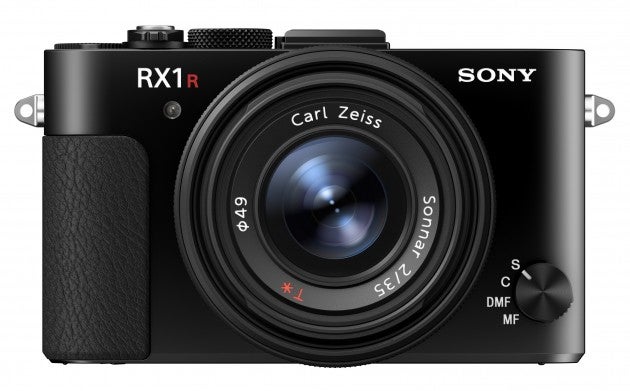
The Sony RX1R II certainly doesn’t come cheap – but for your cash you can expect stunning image quality.
It’s got a full-frame sensor, which boasts a huge 42MP resolution. That is paired with a 35mm f/2.0 Zeiss lens – as it’s a full-frame camera, that translates directly into 35mm, a focal length loved by many, including street photographers.
What sets the RX1R II apart from other cameras though is it’s variable optical low pass filter – a world first. This means that you can turn the effects of using a low pass filter on and off depending on what you’re photographing. Having no OLPF usually results in more detail, but it can also make an image prone to moire patterning. Generally speaking, manufacturers have decided to either have one and not have such sharp detail, or remove one, but introduce the possibility of patterning. By having a variable filter, you get the best of both worlds.
There’s also a fully retractable 0.39-inch 2.359 million-dot EVF. THat’s something the Mark I of this camera didn’t have, and really makes it even more appealing to enthusiast photographers. There’s also been an improvement to the camera’s autofocusing speed, and the screen now tilts.
Battery life is a little poor, so if you’re someone who likes to take a lot of photos throughout the course of a day, an extra battery is all but a must. Those huge 42MP files also slow down the camera a little – and you’ll need plenty of room on your hard drive too.
It’s the image quality which really appeals about this camera, as well as it being something that feels nice in the hand. Detail really is stunning, you’re likely to be extremely impressed with the image quality the camera can produce – and if you’re not, well, you must be very difficult to please. There’s no denying that at this price, this is a niche camera for aficionados who have plenty of cash – it does its job beautifully well, but there will of course be times when you want a different focal length.
Best for: Superb detail resolution
See best deals for the Sony RX1R II
Leica Q
Street price: £2900
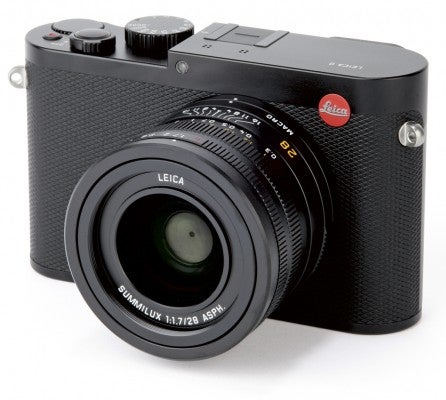
Leica’s Q camera brings the total number of full-frame, fixed lens compact cameras up to two, finally giving Sony’s RX1R something to fight against.
For a while, the Leica Q looked like the better offering, but once Sony retaliated with the RX1R II, it’s now a much tougher call.
Both cameras have a full-frame sensor, but the Leica Q offers a more sensible 24 million pixels. It’s paired with a 28mm f/1.7 lens – slightly wider than the Sony’s 35mm offering.
It’s also got a 3.68 million-dot electronic viewfinder. It’s integrated into the body and doesn’t need to be popped up, unlike the RX1R II’s. That arguably makes using it quicker than the Sony’s, as it’s always ready to go.
Other things it’s going for it against the Sony is the presence of optical image stabilisation, which allows you to use slower shutter speeds. It’s also got a touch sensitive screen.
Both cameras have beautiful design and handling, and are both cameras that you’ll be keen to get out and shoot with. Image quality is, as we’d expect from a Leica and that Summilux lens, superb. It’s not quite on a par with the Sony RX1R II in terms of detail – but at the sizes that most people look at images, you’ll be hard pushed to spot a difference in the real world.
If you’re a Leica enthusiast, or perhaps you just prefer the 28mm focal length you may be tempted more towards this than the Sony. If you like to shoot at slow shutter speeds too, the Leica Q is probably more your street. Otherwise, it’s a tough one to call between the two – you’ll need to put your thinking caps on if you have the cash to splash on a high quality camera like this.
Best for: Fantastic image quality
See best deals for the Leica Q
Fujifilm X100T
Street price: £796
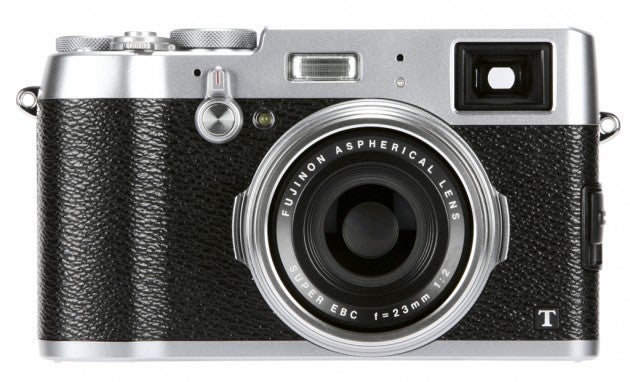
Compared with some of the other fixed lens premium compacts in this list, something which costs less than £800 seems positively good value.
Fuji’s popular X100 series kicked off the company’s renaissance – previously it had wandered into the cheap bridge camera territory and was struggling to get out. Now it makes high quality cameras which can compete with the big boys – and win.
The X100T is Fuji’s third X100 and will no doubt be another object of lust for lovers of Fuji’s retro design credentials. It has a 16 million pixel X-Trans CMOS II sensor – although it’s APS-C sized, it’s been proven to compete well with larger, full-frame sensors thanks to the way it is designed. The lens is 23mm, which is 35mm equivalent and another classic focal length. The maximum aperture is f/2.
Another plus point for the sensor is that the unique design allows it to do away with the aliasing filter, so detail can be resolved very well.
A viewfinder is included which has both optical and electronic functionality – that should appeal to both lovers of traditional viewfinders and those who like the benefits that an electronic finder can bring. The 3-inch screen is 1,040,000-dots, but again there’s no touchscreen available here. The number of dials and buttons on the camera should help to make up for that though.
Image quality is superb, as we’ve come to expect from Fuji’s X series cameras, while using it as a dream. At 35mm, you’ve got a good every day focal length, and although the sensor isn’t full-frame, if you’re only ever going to be printing at A4 or below, then you shouldn’t be too bothered by those in this list that can out resolve it.
Best for: lovers of style and substance
See best deals for the Fujifilm X100T
Fujifilm X70
Street price: £549
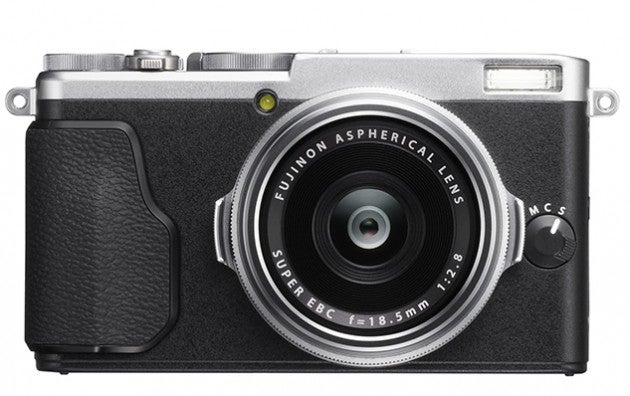
For those who like the idea of a Fuji X100 model, but don’t have the funds to back it up, Fuji has come up with a more budget friendly option in the form of the X70.
There’s still a 16.3 million pixel APS-C sized X-Trans CMOS II sensor, but this time the lens focal length is 18.5mm (28mm equivalent) and has a maximum aperture of f/2.8.
Other features include a 3-inch, tilting 1,040k-dot touch sensitive LCD screen and the 77-point hybrid autofocusing system with speeds of 0.08 seconds claimed.
What brings the price down for this model is the lack of a viewfinder. You can purchase an optical viewfinder separately, but at additional cost (of course). The camera is significantly smaller than the X100T, so if one of your main concerns is the ability to fit into a jacket pocket, it may also appeal more than its larger sibling.
Although the X70 is not yet available to buy, it’s likely that image quality will be on par with the X100T as it has many of the same components. Noise shouldn’t be a problem until you reach very high sensitivities, while detail and tones should be great.
All in all, the X70 could be the ideal choice for those who want a high performing fixed lens compact camera, but don’t quite have the budget for the more expensive options in this list. If you like to use a viewfinder though, you need to bear this in mind.
Best for: those on a budget
See best deals for the Fujifilm X70
Ricoh GR II
Street price: £479
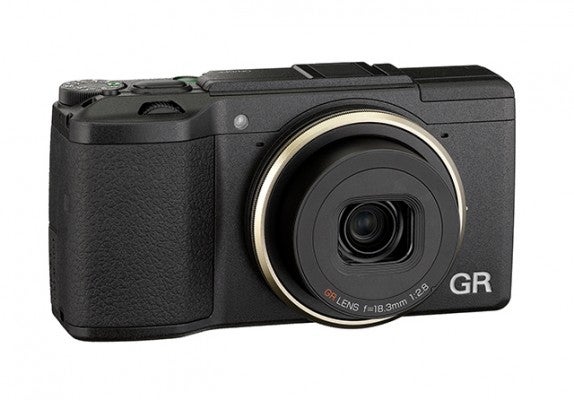
Announced as an update to 2013’s Ricoh GR, the Mark II version uses many of the same specification, but adds Wi-Fi and NFC to the mix.
That means you get a 16 million pixel APS-C sized sensor, along with a 18.3mm (28mm equivalent) f/2.8 lens. There have also been a few tweaks to existing features – you now have the ability to shoot at a faster 1/2500 second shutter speed when using f/2.8, something you couldn’t do before.
Like the Fuji X100T, there’s no anti-aliasing filter present over the Ricoh GR II’s filter, which means that detail resolution is high. The 28mm equivalent lens may be classed as too wide for portraits and street photography, but it’s useful for some landscapes – and you can also activate the crop mode if you do need to get in to closer to a subject.
Ricoh’s enthusiast level cameras have always proven popular, being a pleasure to shoot with thanks to a great level of customisation. There’s no viewfinder though – traditionalists will have to consider whether they can live without one. What that does mean however is better pocketability. You can shove a camera like this in your jeans pocket and be ready to shoot as a scene unfolds in front of you. That’s rare for premium compacts with large sensors – and is great for the price.
Best for: Those who want a large sensor in a small body




